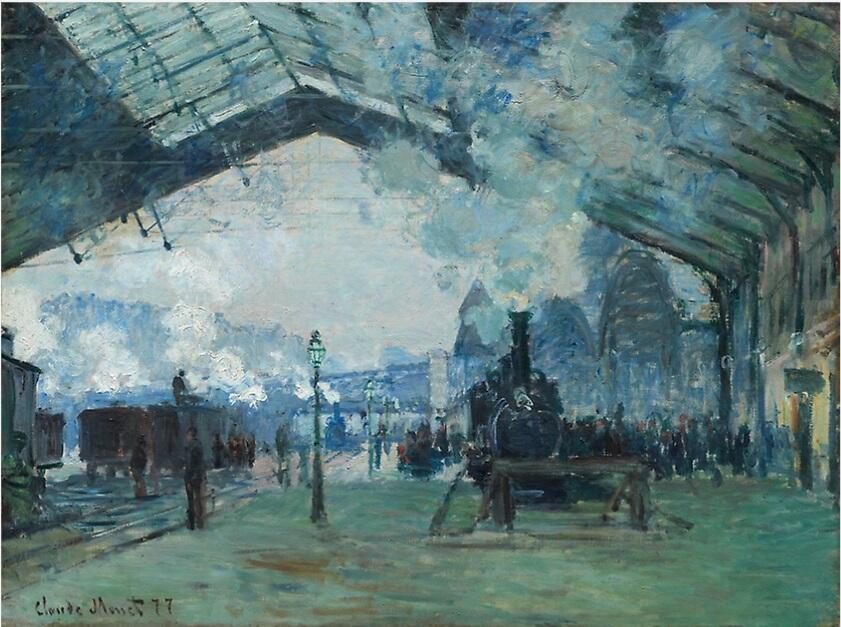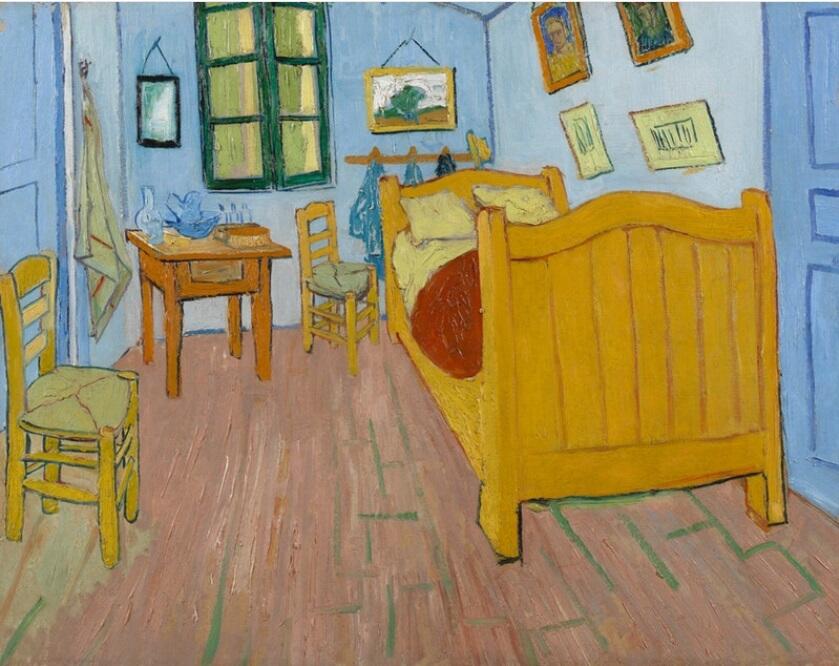Introduction
Claude Monet’s Arrival of the Normandy Train, Gare Saint-Lazare and Vincent van Gogh’s The Bedroom belong to the finest pieces of world painting heritage. The time difference between the two paintings was about ten years, and the styles employed by their creators were different, so it is possible to speak both about similarities and differences in them. Monet’s work was governed by impressionism, and van Gogh’s – by post-impressionism. These two approaches are close but yet not the same. The contextual analysis of the two paintings allows discerning some common and divergent features.
Claude Monet’s Arrival of the Normandy Train, Gare Saint-Lazare
Monet’s Arrival of the Normandy Train, Gare Saint-Lazare (1877) is the embodiment of the major ideas reflected in impressionists’ art. The medium is oil on canvas, and the dimensions are 60.3 × 80.2 cm (23 3/4 × 31 1/2 in.) (Monet). Impressionists showed the development of the urban environment at the end of the 19th century (Brodskaïa). In the picture under analysis, a train station is depicted, with a special prominence on the glass-and-iron train shed (see fig. 1).
In the best tradition of impressionism, the artist demonstrated the changing quality of light. By using harsh brushstrokes, Monet was able to depict each element of the scene accurately and distinctly. The colors prevailing in the picture are the shades of gray, blue, and green. The painting is regarded as the inauguration of Monet’s “established pattern” of painting a peculiar motif regularly to capture “subtle and temporal atmospheric changes” (Monet).

Vincent van Gogh’s The Bedroom
Van Gogh’s The Bedroom (1889) belongs to the post-impressionism period. The medium of the painting is oil on canvas, and the dimensions are 73.6 × 92.3 cm (29 × 36 5/8 in.) (van Gogh). Post-impressionists’ are known to have rejected the natural reflection of light in impressionists’ works (Brodskaïa). The image under analysis demonstrates this feature since van Gogh concentrated on the expressive content rather than a precise depiction of light in the room (see fig. 2).
The colors used by the artist are bright, the tints of lilac, yellow, red, and green prevailing over others. The creation of The Bedroom marked the moment when van Gogh obtained his own home for the first time (van Gogh). At the time, the painter was enthusiastic about decorating the rooms. As it is evident from the painting, the artist decorated the bedroom with his own artistic works. Although van Gogh considered The Bedroom to be the expression of “utter repose,” it seems to bear the effect of anxiety due to the “sharply receding” perspective (van Gogh).

Comparison of the Two Paintings
It is possible to analyze the context of the two paintings from several angles. First of all, the people involved in the creation of each work should be mentioned. There is no information available on the patrons and viewers of both images, but it is known that Monet sold his work soon after completing it, whereas van Gogh presented his to his brother (Monet; van Gogh). In both cases, no one but the creator was involved in the process of work.
Another similarity is the warm reception of the paintings by the public. For Monet, Arrival of the Normandy Train was one in the sequence of twelve paintings with the same subject, which means that the choice of scenery was rather successful (Monet). For van Gogh, the success was even more pronouncing since he made two more copies of the same painting, which were almost identical to the original (van Gogh). Hence, it is viable to conclude that the response of contemporary critics was highly positive.
Another angle of contextual analysis is related to the physical work of art. Monet’s painting was created in 1877, and van Gogh’s – in 1889. The slight difference in the time dimension brought about considerable changes in artistic movements. Monet was the representative of impressionism, whereas van Gogh represented post-impressionism. The two styles were closely related in time and manner, the latter emerging as a result of the former. In fact, many post-impressionists used to be impressionists first (Brodskaïa). Since both artists were prominent representatives of their respective styles, it is possible to assume that their techniques were new in some way. Both Monet and van Gogh used a rather common technique (oil on canvas) to create their paintings.
Finally, it is crucial to discuss the larger social issues presented by the two paintings. The social context in Monet’s painting was vivid, whereas in van Gogh’s picture, there was no social issue depicted. In the tradition of impressionism, Monet concentrated on the development of urbanization, which was a serious social change at the time. Meanwhile, van Gogh’s painting was dedicated to personal experience, so there was no important social message in it.
Conclusion
Monet’s Arrival of the Normandy Train, Gare Saint-Lazare and van Gogh’s The Bedroom were created under the influence of different artistic movements and had dissimilar subjects. However, it is still possible to identify some similarities between the two works, such as the use of bold brushstrokes, expressive representation of colors, and the popularity of both paintings with contemporary viewers. The main contrast, however, is in social importance: Monet’s work of art represents a significant social change, while van Gogh’s painting concentrates on his life experience.
Works Cited
Brodskaïa, Nathalia. Impressionism and Post-Impressionism. Parkstone International, 2018.
Monet, Claude. Arrival of the Normandy Train, Gare Saint-Lazare. 1877. Art Institute Chicago. Web.
van Gogh, Vincent. The Bedroom. 1889. Art Institute Chicago. Web.